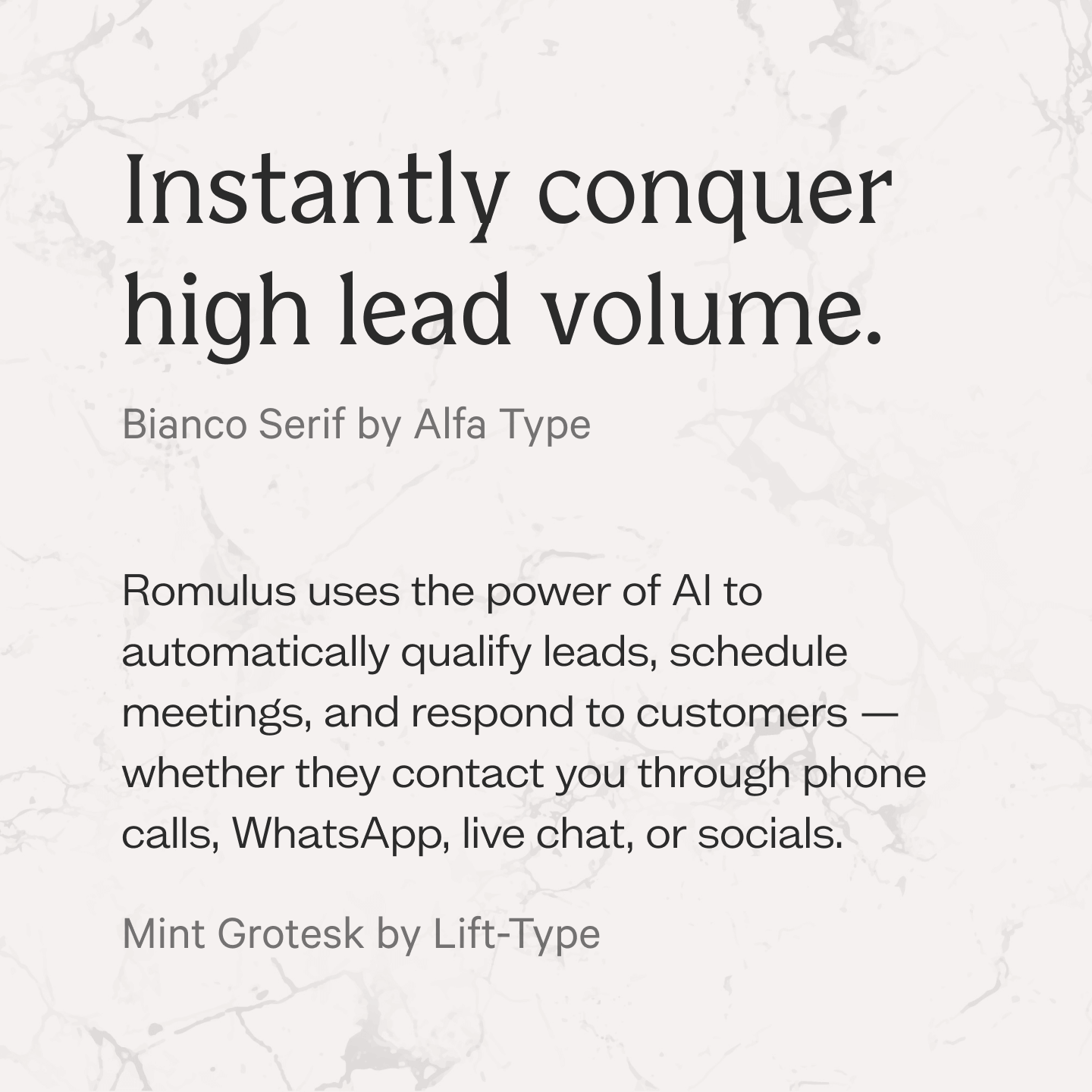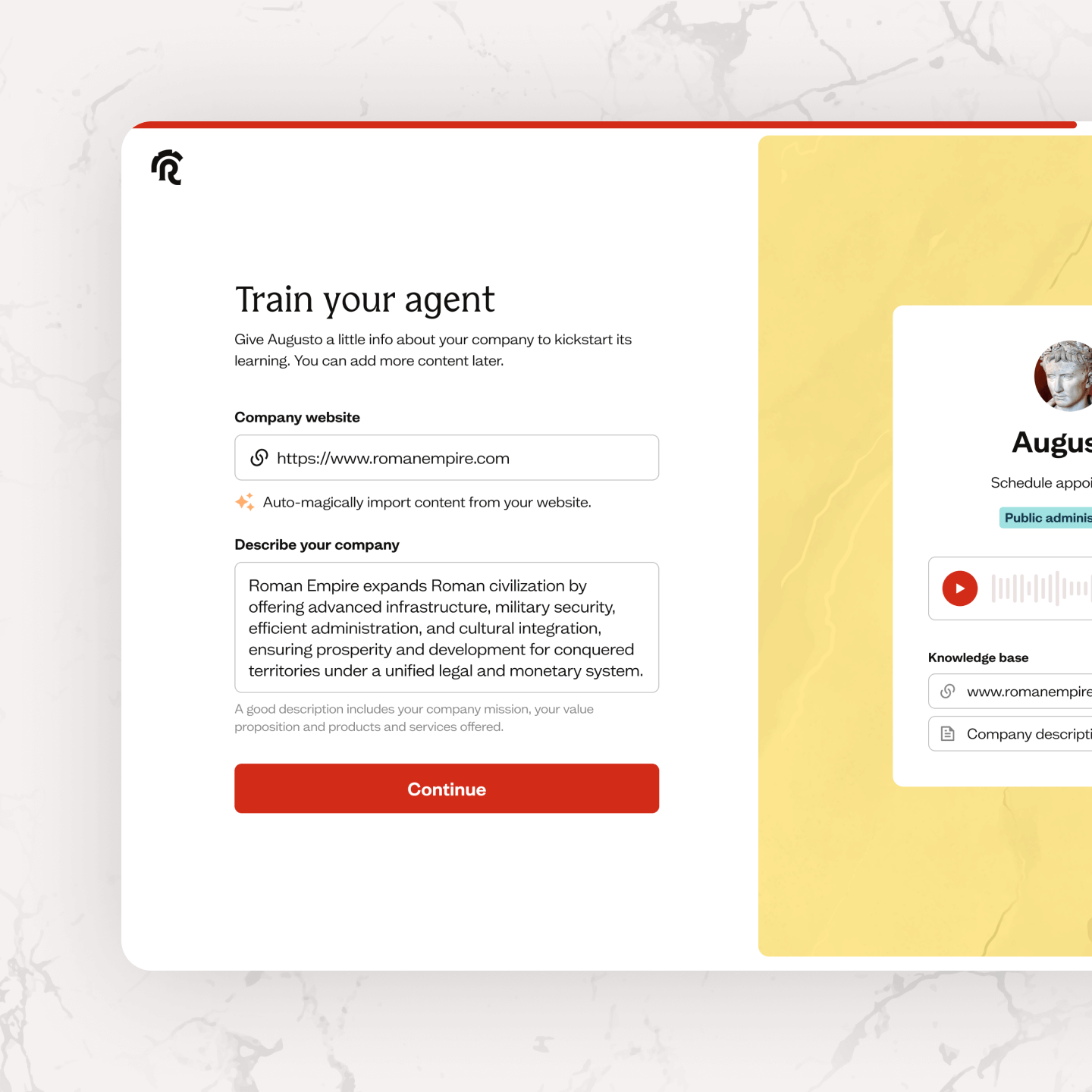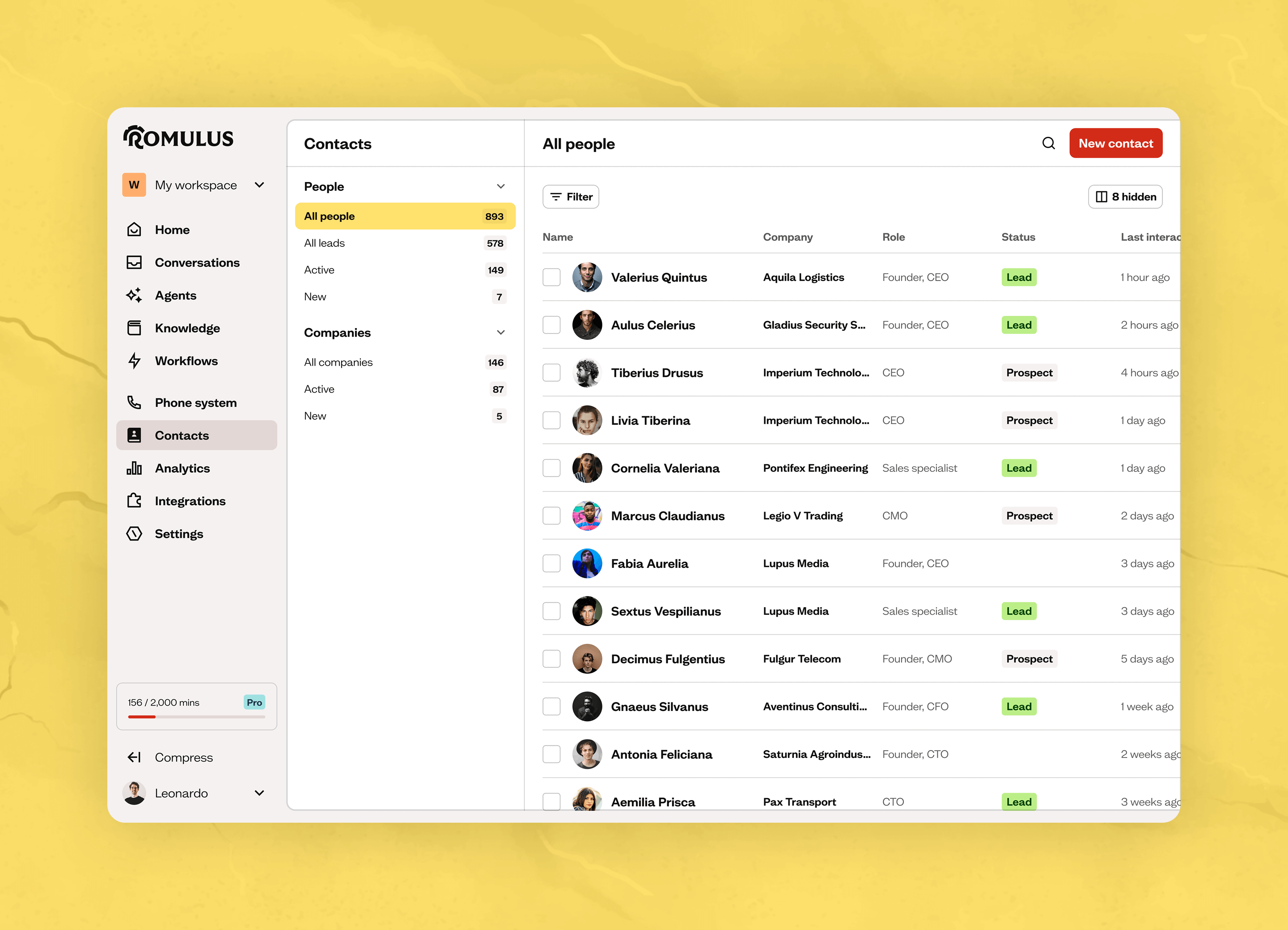Romulus è un agente AI che gestisce conversazioni telefoniche e chat in modo naturale. Ascolta, risponde, qualifica i lead e fissa appuntamenti. Tutto in tempo reale, su più canali, 24 ore su 24. Un alleato per i team commerciali che vogliono aumentare le conversioni senza aumentare i costi. Quando il team di Romulus ci ha coinvolti, la sfida era duplice: dare un volto riconoscibile al brand e disegnare una piattaforma scalabile, capace di sostenere un prodotto in rapida evoluzione.

Un’identità tra storia e futuro
Il nome Romulus racchiude l’ambizione del progetto: come il primo re di Roma, il prodotto punta a espandere il potere di un team di vendita, moltiplicandone la forza. L’intelligenza artificiale diventa così una legione di agenti digitali, pronti a semplificare e potenziare il lavoro umano. Il risultato è un brand dal tono deciso e riconoscibile, che comunica solidità e innovazione con la stessa naturalezza con cui i suoi agenti parlano al telefono.


L’identità visiva di Romulus nasce da un equilibrio tra classicità e modernità. Abbiamo scelto una tipografia che richiama l’antica Roma, ma con tratti netti e contemporanei. I colori principali, giallo e rosso, evocano la città eterna, reinterpretati in chiave digitale.


Un sistema che cresce con il prodotto
Dall’identità al prodotto, il passo è stato naturale. Abbiamo progettato il design system di Romulus come una libreria viva di componenti, token e pattern. Ogni elemento, dai pulsanti ai moduli conversazionali, è pensato per essere riutilizzato, aggiornato e adattato a nuovi scenari senza compromettere coerenza o velocità di sviluppo.

Un assistente sempre attivo
Il cuore di Romulus è una piattaforma conversazionale omnicanale che unisce telefonate, WhatsApp e chat social in un’unica interfaccia. Gli agenti AI rispondono come un operatore umano: ascoltano, qualificano i lead e fissano appuntamenti, anche quando il team è offline.

Ogni conversazione diventa un’opportunità: l’AI raccoglie informazioni, valuta il potenziale del lead e aggiorna automaticamente CRM e tool di vendita. Quando un operatore torna disponibile, trova tutto già pronto per la fase successiva.


Tecnologia invisibile
Dietro ogni conversazione c’è un sistema complesso, ma progettato per scomparire. L’interfaccia è chiara, le informazioni sono sempre accessibili e la gestione è centralizzata. L’obiettivo: far percepire l’intelligenza artificiale non come una macchina, ma come una voce naturale che potenzia il lavoro umano.



